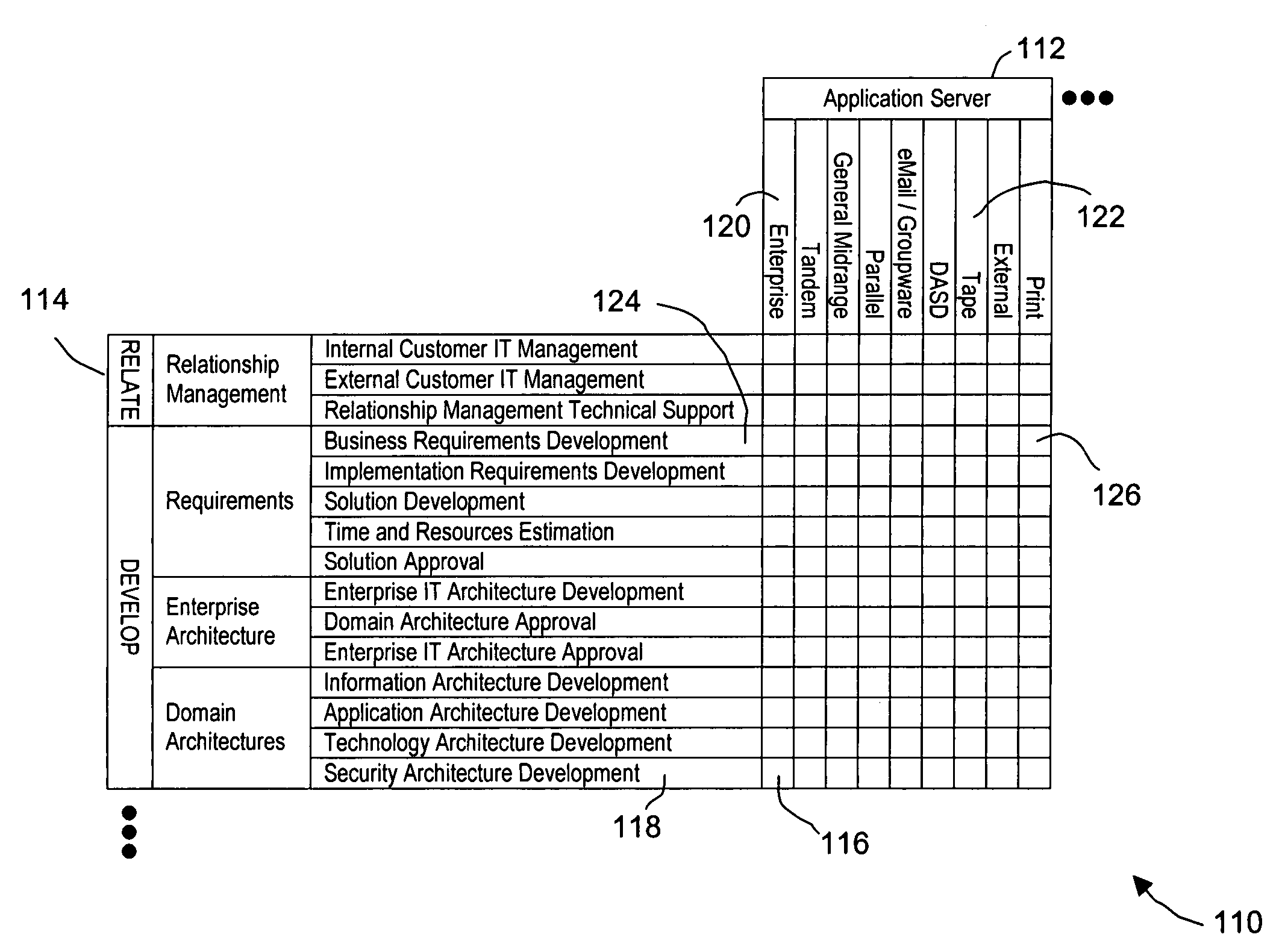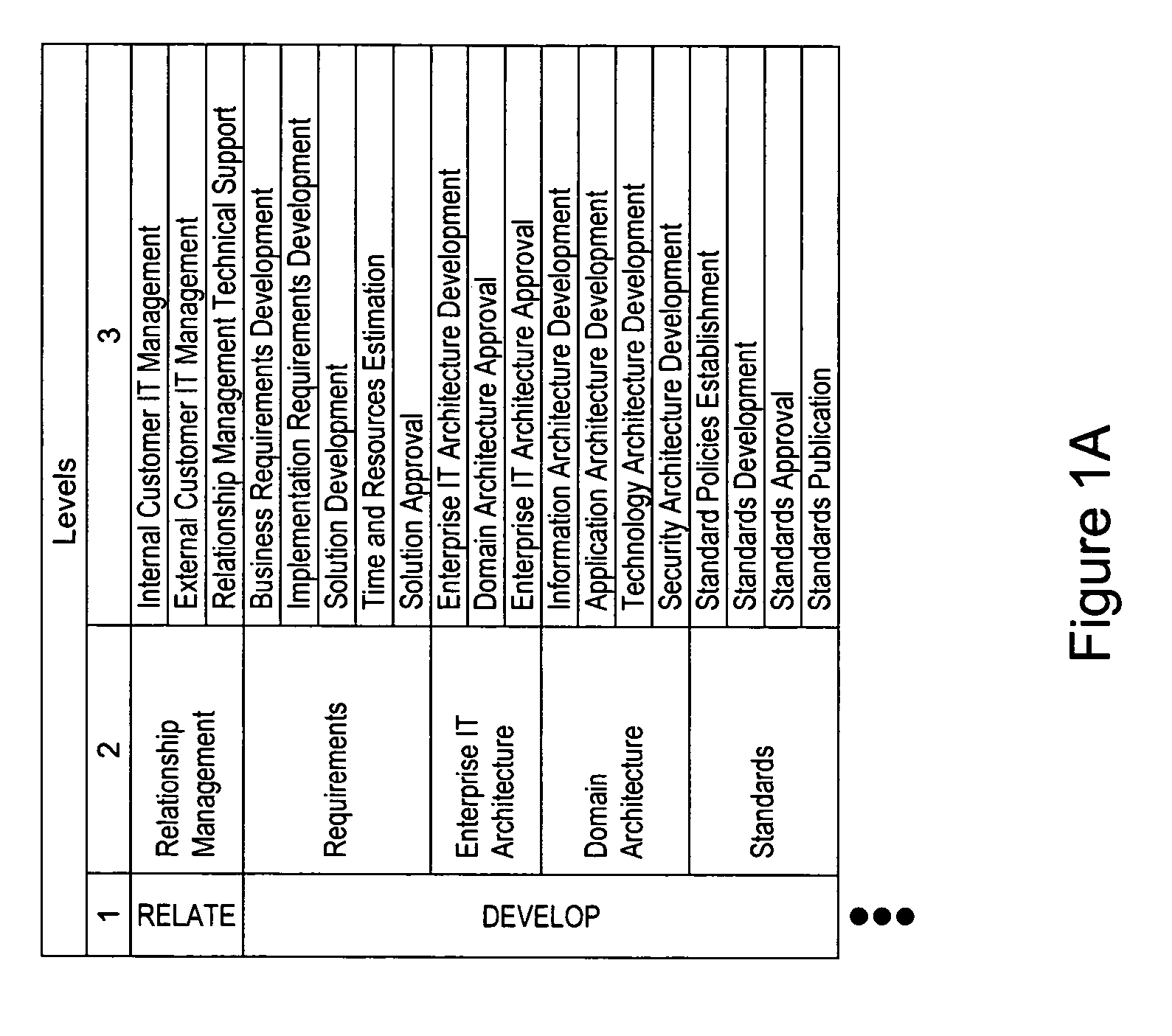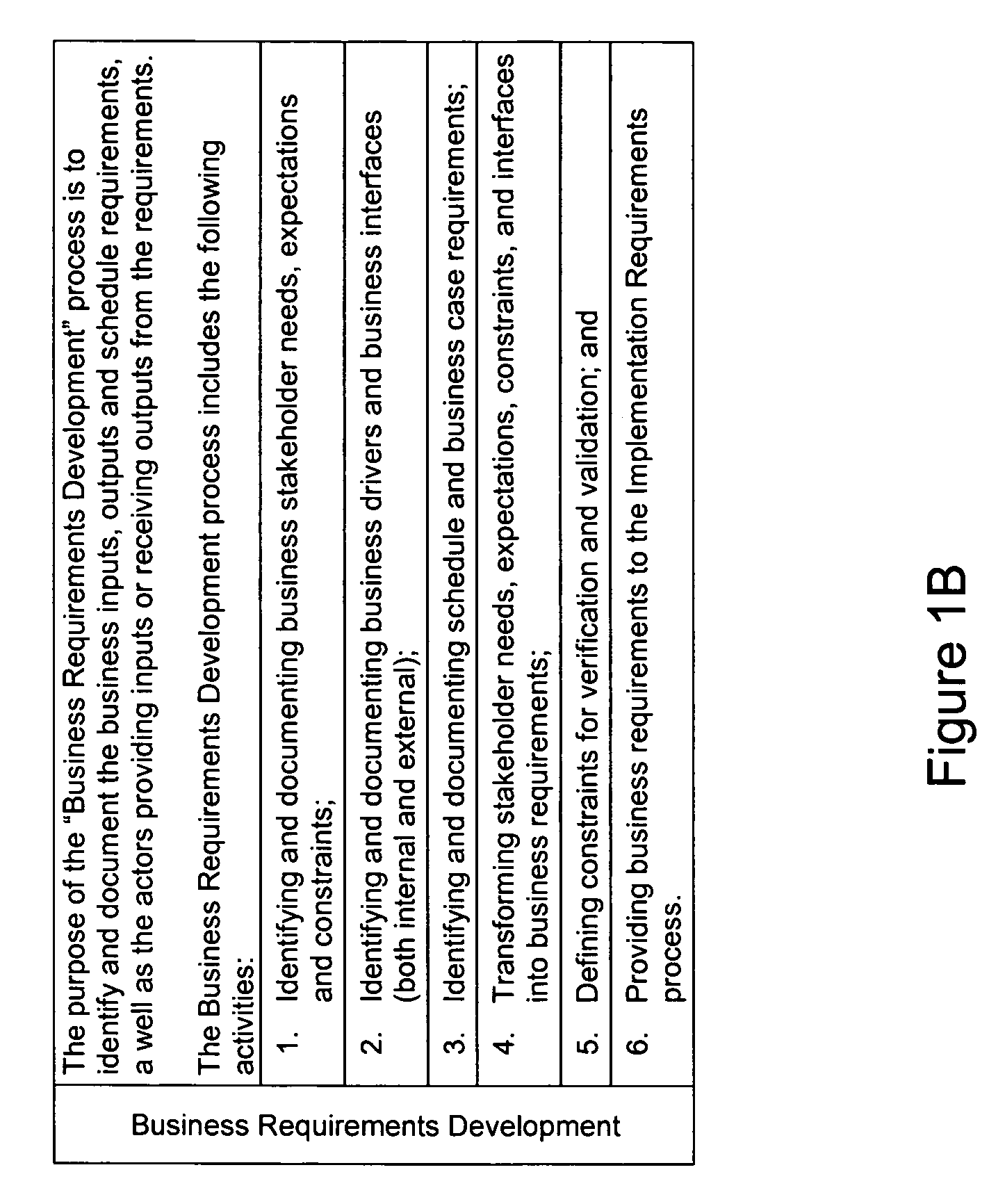System and method for analyzing an operation of an organization
a technology of organization and operation, applied in the field of organization and business operations, can solve the problems of not meeting the needs of unable to achieve the conventional methods of completing an outsourcing transaction, and unable to accommodate customers who want more or better, so as to facilitate the creation of customer-centric, end-to-end delivery scenarios, and facilitate the appropriate placement of service measures
- Summary
- Abstract
- Description
- Claims
- Application Information
AI Technical Summary
Benefits of technology
Problems solved by technology
Method used
Image
Examples
Embodiment Construction
[0076]FIGS. 1A through 8 illustrate an exemplary system and method for outsourcing using a value chain, according to an embodiment of the present invention. Although the outsourcing in this particular example is an outsourcing of information technology, one of ordinary skill in the art would appreciate that the systems and methods described in this example could apply equally well to other outsourcing contexts such as human resources or finance.
[0077]According to this embodiment of the present invention, a method for outsourcing includes two main phases: creating a sourcing strategy and completing a sourcing transaction. In the following description of this embodiment, these two phases are first presented separately and then presented jointly to illustrate the overall process for outsourcing.
[0078]The value chain is a tool to identify and create value in organizations. The value chain examines activities in a systematic way and facilitates an understanding of how processes relate an...
PUM
 Login to View More
Login to View More Abstract
Description
Claims
Application Information
 Login to View More
Login to View More - R&D
- Intellectual Property
- Life Sciences
- Materials
- Tech Scout
- Unparalleled Data Quality
- Higher Quality Content
- 60% Fewer Hallucinations
Browse by: Latest US Patents, China's latest patents, Technical Efficacy Thesaurus, Application Domain, Technology Topic, Popular Technical Reports.
© 2025 PatSnap. All rights reserved.Legal|Privacy policy|Modern Slavery Act Transparency Statement|Sitemap|About US| Contact US: help@patsnap.com



